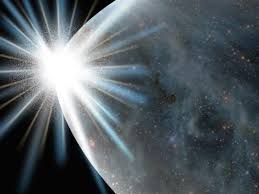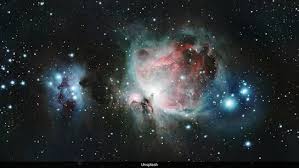According to a new research, it is possible that our Earth and the entire Milky Way galaxy are in the middle of a “cosmic void” or “Hubble Bubble” that is 2 billion light-years long and contains 20% less matter. This discovery may solve one of the biggest puzzles in cosmology – Hubble Tension.
Connection between Big Bang sound and Hubble tension

University of Portsmouth researcher Indranil Banik and his team have shown that Baryon Acoustic Oscillations (BAOs) — what we might call the “sound of the Big Bang” — support the existence of a local void. These BAOs were sound waves produced in the early stages of the universe that “froze” as the universe cooled and began to form neutral atoms. They are used as a “standard ruler” to measure cosmic expansion.
Similarly, if our galaxy is in the middle of a void, the gravitational pull pulls the surrounding matter outward, causing the void to become emptier. This simply means that our surrounding galaxies are moving away from us faster than expected — what we call “faster local expansion.”
Hubble Tension: What is this problem?
The Hubble constant tells us how fast the universe is expanding. This is measured in two ways:
- Using the Cosmic Microwave Background (CMB) — which gives an average of the entire universe. This method is based on the Lambda Cold Dark Matter (LCDM) model.
- Local observations — such as Type Ia supernovae and variable stars, called “standard candles.” These are used to measure the redshift of local galaxies to determine their rate of expansion.

The problem is that local observations show a higher Hubble constant than CMB-based measurements. This difference is known as Hubble Tension.
Banik argues that this tension is a local problem and can be resolved by assuming that we are at the center of a vast cosmic void.
Local Void Theory: The Most Logical Solution?
According to this theory, if the Earth and the solar system are at the center of a low-density void, the expansion rate there will naturally be higher. This may explain the gap between local and global expansion rates.
Banik’s analysis suggests that the void model from the BAO data is 100 million times more likely than the homogeneous Planck cosmology.
He said:
“We analyzed BAO measurements over the last 20 years and found that the void model gives a more accurate fit than the traditional CMB-based model.”
LCDM Model and Cosmic Void: Conflict?
The Lambda CDM model of standard cosmology assumes that matter is homogeneously and isotropically distributed in the universe — that is, equally distributed in every direction. But if a 2 billion light-year wide void really existed, this model would not support it.

But Banik says the new BAO data challenge this traditional assumption.
What’s next?
The next step is to compare the void model with other cosmological models. This analysis can be done using “cosmic chronometers” — like galaxies whose expansion history can be understood by estimating the ages of the stars inside them.
When a galaxy’s age and redshift are compared, we get an idea of how long ago that galaxy formed and how much the universe has expanded since then.
Banik’s Research: A New Door
This research was presented at the Royal Astronomical Society’s National Astronomy Meeting (NAM) 2025 on July 7 at Durham University (UK). The work of Banik and his team is taking cosmology in a new direction – in which we are looking at our cosmic environment from a new perspective.
If this theory is proven, not only will the Hubble tension be resolved, but our place – Earth’s real location in the cosmos – will also be revealed in a new way.
Are we living in a cosmic illusion? Are we at the center of a vast, empty universe? These questions have now become more important than before.
